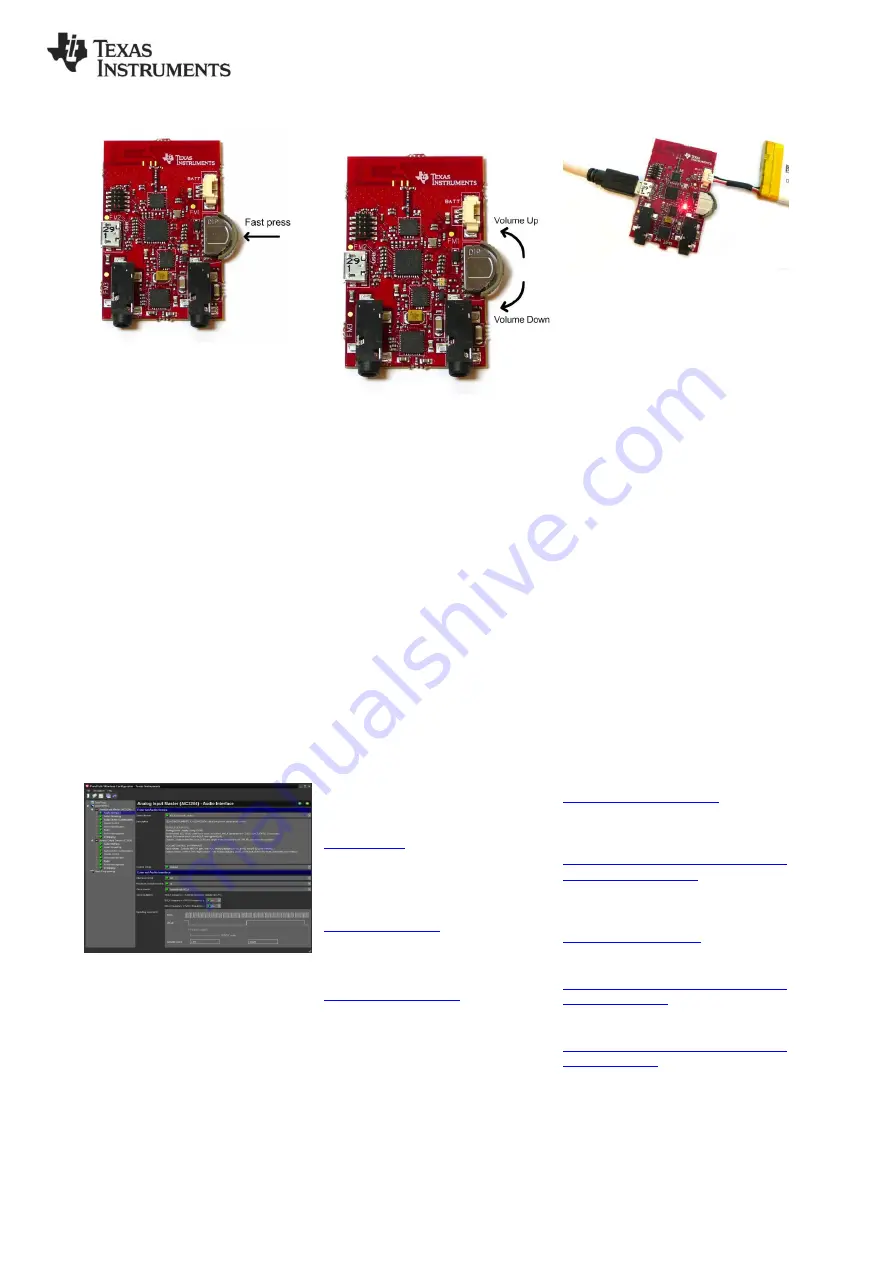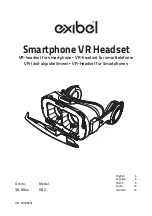
SWRU282
March 2011
7. Pairing
In the pre-programmed firmware the
pairing button is mapped to pressing the
rocker switch IN (not hold, which is power
toggling as described in 4).
Press the pairing button on either board
and observe that the LED blinking pattern
changes. It will now flash two times per
second which indicates that the device is
trying to pair with another device.
If the pairing button on the other board is
pressed within 10 seconds the devices will
pair. The Master status LED will be
constantly lit, and the Slave status LED
will flash once every 2.5 seconds. Audio is
now being streamed to the Slave.
When successfully paired the Slave will
save the Master’s device ID in non-volatile
memory and automatically try to pair with
this Master whenever in the ALONE state.
Thus pressing the pairing buttons again
will no longer be necessary (unless the
Slave is re-programmed or paired with
another Master).
8. Volume control
The pre-programmed Slave firmware is
configured to have so-
called “local volume
control” meaning that the Slave controls
its own volume locally. The volume
buttons are mapped to clicking/holding the
rocker switch UP and DOWN.
9. Charging
To charge the battery, simply connect the
USB micro cable while the battery is also
connected. The charge voltage should be
5V (plugging the USB cable in your
computer will work perfectly). The bottom
LED will be lit indicating charging. When
the battery is fully charged the LED will go
dark.
The Headset board can be powered from
USB alone (remove the battery and
connect USB cable). Then the LED will be
lit the whole time.
Audio can be streamed while charging.
For information about the single chip
charger and DC/DC converter, see [4].
10. PurePath Wireless
Configurator
The next step is to download the PurePath
Wireless Configurator (PPWC) [3]. PPWC
makes it possible to explore all the
configuration options of the CC85XX
family. After creating device configurations
for Master and Slave network roles,
PPWC can program the CC85XX devices
directly
through
the
CCDebugger
(included in the kit).
A. More information
On Texas Instruments’ Low-Power RF
web site you will find all our latest
products, application and design
notes, FAQ section, news and events
updates, and much more. Just go to
The Low Power RF Online Community
has forums, blogs and videos. Use the
forums to find information, discuss and get
help with your design. Join us at
The TI LPRF eNewsletter keeps you up to
date on e.g. new products, application
notes, software and events. Sign up at
We hope you will enjoy working with the
CC85XX and associated Low-Power RF
products from Texas Instruments.
B. References
[1] CC8520 product web page
[2] TLV320AIC3204 product web
page
http://focus.ti.com/docs/prod/folders/p
rint/tlv320aic3204.html
[3] PPW Configurator product web
page
[4] BQ25015 product web page
http://focus.ti.com/docs/prod/folders/p
rint/bq25015.html
[5] CC2590 product web page
http://focus.ti.com/docs/prod/folders/p
rint/cc2590.html





















